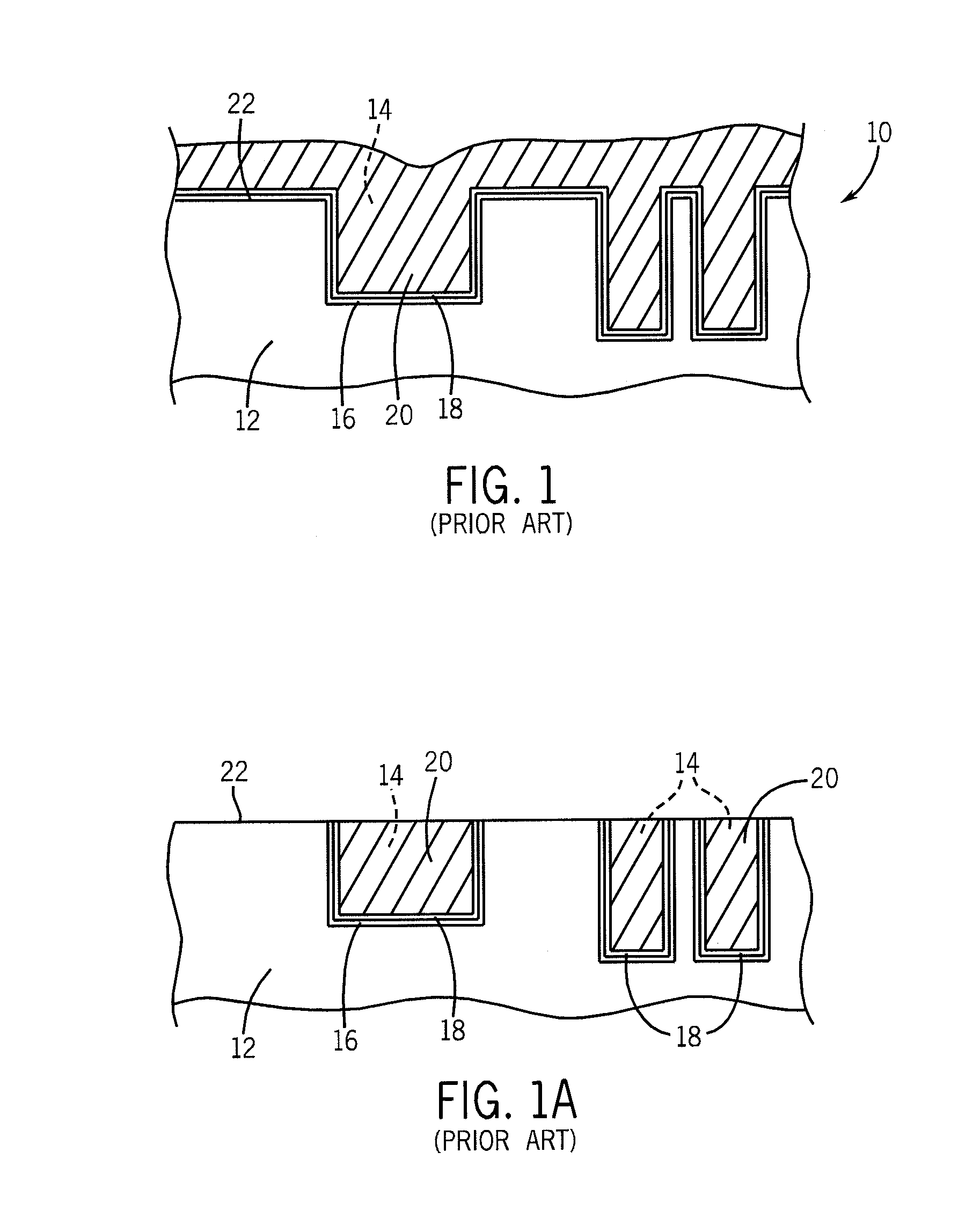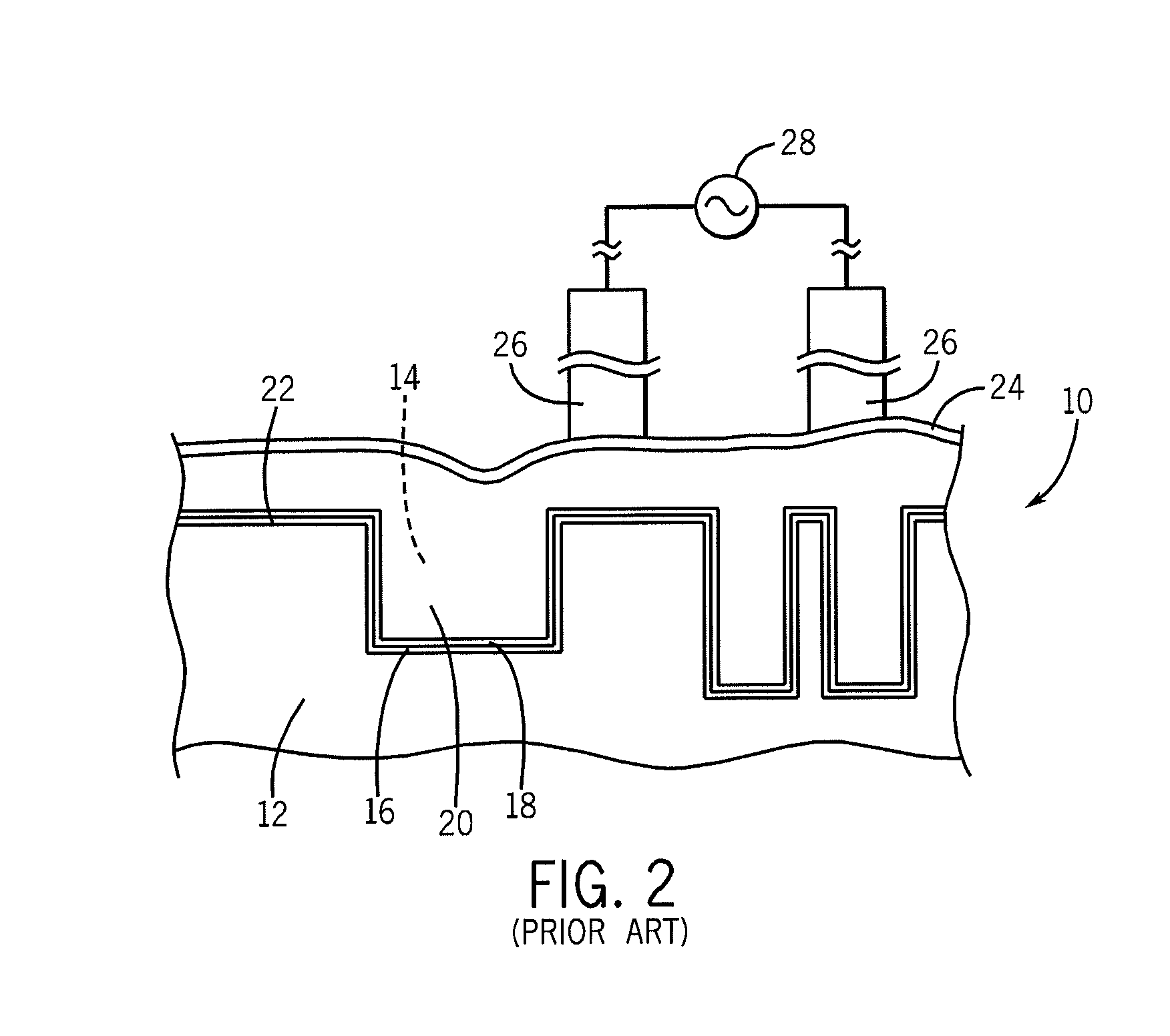Method of selectively removing conductive material
a technology of conductive metal and substrate, applied in electrodialysis, refrigeration machines, refrigeration components, etc., can solve the problems of difficult removal of most barrier materials by cmp, brittle current low-k and future ultra-low-k dielectrics, dishing and scratching, etc. selective removal of conductive metals is facilitated, the effect of facilitating the removal of conductive metals
- Summary
- Abstract
- Description
- Claims
- Application Information
AI Technical Summary
Benefits of technology
Problems solved by technology
Method used
Image
Examples
Embodiment Construction
[0032]The following description with reference to the drawings provides illustrative examples of devices, assemblies, systems, and methods for selectively removing conductive metal material from semiconductor wafers and other substrates according to the invention. Such description is for illustrative purposes only and not for purposes of limiting the same. The present invention can be utilized to provide other embodiments of devices, assemblies, and systems in accordance with the invention.
[0033]In the context of the current application, the term “semiconductor substrate” or “semiconductive substrate” or “semiconductive wafer fragment” or “wafer fragment” or “wafer” will be understood to mean any construction comprising semiconductor material, including but not limited to bulk semiconductive materials such as a semiconductor wafer (either alone or in assemblies comprising other materials thereon), and semiconductive material layers (either alone or in assemblies comprising other mat...
PUM
| Property | Measurement | Unit |
|---|---|---|
| pressure | aaaaa | aaaaa |
| particle size diameter | aaaaa | aaaaa |
| dielectric constant | aaaaa | aaaaa |
Abstract
Description
Claims
Application Information
 Login to View More
Login to View More - R&D
- Intellectual Property
- Life Sciences
- Materials
- Tech Scout
- Unparalleled Data Quality
- Higher Quality Content
- 60% Fewer Hallucinations
Browse by: Latest US Patents, China's latest patents, Technical Efficacy Thesaurus, Application Domain, Technology Topic, Popular Technical Reports.
© 2025 PatSnap. All rights reserved.Legal|Privacy policy|Modern Slavery Act Transparency Statement|Sitemap|About US| Contact US: help@patsnap.com



